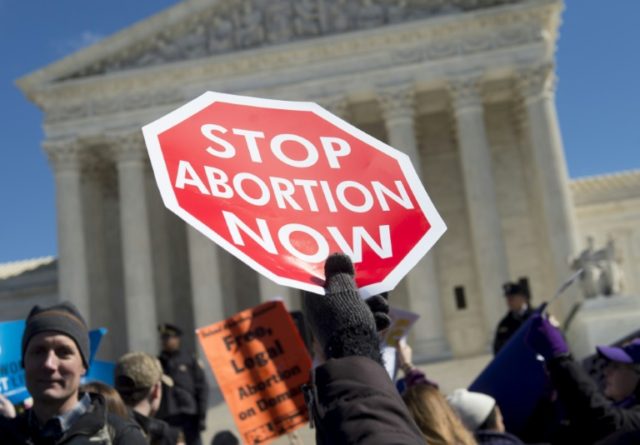What do you do with an aborted baby?
Do you send the child’s body to a power plant where he or she is burned to generate energy?
That’s what was happening when the British Columbia Health Ministry admitted in 2014 that it shipped aborted babies to Oregon, where a “waste-to-energy” plant used them to produce electrical power for a local utility.
Do you store the aborted baby’s remains in the kitchen?
That’s what abortionist Kermit Gosnell did. When investigators raided the now-convicted-murderer’s Philadelphia clinic in 2010 on drug related charges, they found babies’ dismembered feet inside jars and their bodies stashed in milk jugs, orange juice cartons and cat food containers.
Do you sell the baby’s heart, liver and brain for research?
That’s the practice in abortion clinics that has first uncovered in 1997. This year Congress has launched an investigation that is still ongoing.
But if you don’t consider aborted babies to be a renewable energy source, collectables, or troves of salvageable organs you can use to “diversify” your “revenue stream,” what do you do with them?
You treat them as the humans they are.
That’s what Texas and other states are trying to do. And it’s what the upcoming National Day of Remembrance for Aborted Children on September 10 — an event I co-founded — is all about.
Texas’s Health and Human Services Commission has proposed rules that would require aborted babies’ bodies to be cremated or buried, just like the remains of born people. A spokesman for the commission said that the new regulations will ensure that: “Texas law maintains the highest standards of human dignity.”
Naturally, the nation’s leading degrader of human dignity — the abortion industry — opposes the move. Planned Parenthood, which is already suing Indiana over its new statute governing fetal remains, has announced its objections to the Texas regulations. The abortion business says that the babies it kills should continue to be treated as medical waste — incinerated or ground up and dumped into landfills. The Center for Reproductive Rights, one of the legal arms of the pro-abortion movement, has already threatened a lawsuit.
The abortion industry opposes the burial or cremation of aborted babies because such acts, by acknowledging the humanity of these tiny children, highlight the inhumanity of abortion.
The National Day of Remembrance, on the other hand, is an annual observance that affirms the humanity of little ones who were unwanted and responds to them appropriately, by holding simultaneous memorial services at gravesites where aborted babies are buried. Such an observance points to a Culture of Life, in which mourning such children is the dominant response to their violent deaths — rather than ignoring them or rationalizing those deaths.
A project of Citizens for a Pro-Life Society, the Pro-Life Action League, and the organization I lead, Priests for Life, the National Day of Remembrance was born after many years of ceremonies across the country memorializing babies whose bodies had been relegated to the status of trash by the abortion industry.
As one of the co-founders of the National Day, Priests for Life has always acted on the truth that you don’t stop treating a person with respect when they die. On behalf of Priests for Life, I have participated in burial and memorial services for aborted babies across the country, such as in 2008 when I conducted the funeral for three aborted babies at the Shrine of the Most Blessed Sacrament that EWTN’s Mother Angelica built in Hanceville, Alabama.
On last year’s National Day of Remembrance, I participated in a memorial service at the gravesite of 16,431 aborted babies. Yes, you read that number correctly.
Back in 1982, the remains of more than 16,000 unborn children were found in the repossessed storage container of a Los Angeles area pathologist. The pathologist had received the bodies from several abortion clinics and kept them in a container at his residence. Three years after the discovery, and over the objections of the abortion lobby, the babies were finally allowed to be interred at a secular cemetery in what is the largest such burial spot for the unborn in the country.
Gravesites for the aborted, while not common, are not unusual either. On September 10, National Day of Remembrance ceremonies will be held at 50 such sites and over 135 other memorial spots nationwide. In total, more than 560 locations have been created to honor the tens of millions who have lost their lives to the abortionist’s lethal tools.
Participation in these services is meaningful and important. Standing beside the marker for an unnamed child brings home the reality, brutality and finality of abortion. At the grave, it becomes clear that the premature ending of a baby’s life is not an abstraction, but a physical reality. It’s also a call to action to protect those still in danger.
Abortion propagandists want us to treat the unborn as anything but human, so they fight tooth and nail to stop any effort like Texas’s proposed regulation on the disposition of aborted babies. They want babies treated like cancerous tumors.
Our acquiescence to abortionists’ lies keeps them in business, fills mothers with regret, and destroys lives. Instead, let us treat each other, including the unborn, as we would want to be treated. By mourning the babies who have been killed, let us advance a culture of life.
Fr. Frank Pavone is National Director of Priests for Life. For more information on the National Day of Remembrance for Aborted Children, please go to www.abortionmemorials.com.

COMMENTS
Please let us know if you're having issues with commenting.